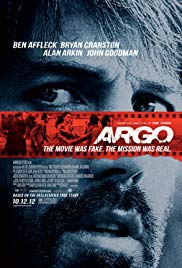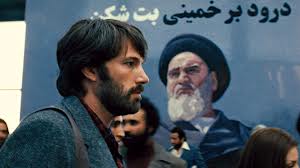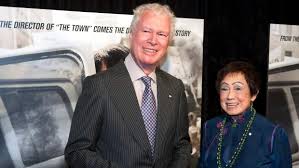1. Given the fact that the audience will take away from this film a vivid impression of the 1979-1981 Iran hostage crisis, do you think that, on the whole, this film improves the viewer’s understanding of the important historical events as they actually occurred? Justify your conclusion.
Suggested Response:
There is no one correct response. The discussion should include criticisms of the film as historical fiction if the audience takes it to be the definitive story of the hostage crisis because it focuses on the rescue of six diplomats taking the focus away from more important issues such as the reason for Iranian hostility to the U.S. and the plight of the 52 hostages held at the embassy. The discussion should also include a mention of the failure of the film to fully acknowledge the role of Ambassador Taylor and the Canadian government in protecting and freeing the hostages.
2. Historical fiction is still fiction and uses the techniques of fiction. What elements in the film create the suspense that keeps viewers on edge even though they know the outcome of the story?
Suggested Response:
Most of the tension stems from the race against time. The Iranians are busy reassembling shredded paper, and they are hunting for the missing American personnel who are now pretending to be part of a film crew. There is a close call at the bazaar and at the airport, and the phone call to the supposed studio is nearly missed. The housekeeper is in deep trouble should she not be able to flee to Iraq, a feat she barely accomplishes. There are several others that students may describe. In the discussion, note that all of these except perhaps for the first two are fictional.
3. Who was the primary audience for the Argo cover used in this exfiltration? Why did the CIA go into such depth as creating a fake production company, manning offices in Hollywood, having the Canadians create fake identities for the houseguests? (Hint: The primary audience wasn’t the Iranians at the airport or anywhere else.)
Suggested Response:
Antonio Mendez, the CIA officer who planned the operation and escorted the houseguests to freedom wrote:
The first rule in any deception operation is to understand who your audience is. In the case of Argo, the audience was not the Iranians but the houseguests [the 6 employees of the embassy] themselves. While we’d backstopped the cover story to the hilt, the people we really wanted to convince were those six American diplomats. Of course, if any Iranian officials had actually checked, their story would have seemed legitimate. But knowing that this is what sold the cover story to the houseguests in the first place. They believed in it, which gave them the confidence to carry it off. Argo – How the CIA and Hollywood Pulled Off the Most Audacious Rescue in History, by Antonio Mendez and Matt Baglio, Viking, 2012, page 298.
4. Describe some of the risks and benefits of engineering regime change in other countries.
Suggested Response:
There is no one correct answer. Certainly, the U.S. experience with Iran since the Second World War is an example of one risk, i.e., that the country is turned into an implacable foe and that thereafter, the intervening country has little ability to influence its actions. Note that in the case of Iran, there are other reasons for hostility between the two countries, including the Islamist fundamentalism of the regime and its opposition to Israel, a close U.S. ally. It is also important to note that the Cold Warrior architects of U.S. policy on Iran in the 1950s believed that the Soviet Union posed a mortal threat to the U.S. and that a change of government in Tehran was necessary to protect U.S. interests at the time. No one would argue that modern day Iran poses a mortal threat to the U.S. There are also other examples of U.S. sponsored regime change that did not lead to lasting hostility, e.g., Chile in 1973.
5. Who acted more heroically, the Taylors or Antonio Mendez?
Suggested Response:
There is no one correct answer. TWM views the Taylors as the most heroic. Ambassador Taylor, with the support of his wife, went far beyond his obligations and job description to help people of another country, putting his life and that of his wife in danger in order to protect the Americans. Mendez deserves praise as well, and earned all the awards he received from the CIA. He put his life in danger, too. However, Mendez was just doing his job. By the way, Jimmy Carter, who was President during this period and gave the final go-ahead for the operation, agrees. He gives the Canadians 90% of the credit for saving the hostages.
6. The voice-over at the beginning of the film, which outlines the nature of the U.S./Iran conflict, serves to provide background information for the story. In what way did this information influence your attitude toward both the revolutionaries and the diplomats?
Suggested Response:
All opinions are acceptable. Some students will decide that the historical overview lends support to the Iranian revolution; others will feel that it explains but does not excuse or lend support to the violent overthrow of the Shaw.
See questions on the Film Study Worksheet for a Work of Historical Fiction (discussion questions #s 1 & 2 are derived from this worksheet). See also Discussion Questions for Use With any Film that is a Work of Fiction.





